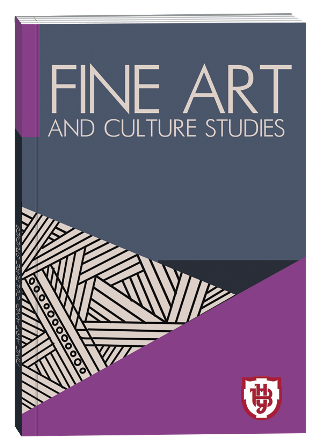БАГАТОФУНКЦІОНАЛЬНІСТЬ БАЯНА ТА ЙОГО МІСЦЕ В КАМЕРНІЙ ІНСТРУМЕНТАЛЬНО-АНСАМБЛЕВІЙ СИСТЕМІ
DOI:
https://doi.org/10.32782/facs-2022-5-4Ключові слова:
instrumental poetics, accordion, music making, collective form, instrumental-ensemble systemАнотація
В даній статті представлено огляд та узагальнення публікацій, в яких розглянуто особливості багато- функціональності баяна в історико-культурному аспекті та визначено місце цього інструмента в камерній інструментально-ансамблевій системі. Як результат нами було зазначено, що для баяна характерна сталість фізико-акустичних якостей, яка обумовлена наступними параметрами: фіксованою звуковисотністю рівномір- но-темперованого строю, відсутністю прямого контакту виконавця з джерелом звуку – металевими голосами складає певну універсально-об’єктивну сферу баянної інтонаційності у паралель до фортепіанної. В даній роботі висвітлюються ключові етапи модернізації гармоніки на шляху до сучасного концертного багатотембрового готово-виборного баяна. Окреслюються певні принципі позиції, які вплинули на тембраль- ні, артикуляційно-динамічні і фактурні властивості майбутнього баяна, що обумовили його теперішні функції і місце у камерному ансамблі. В статті підкреслюється, що в багатотембровому ансамблі за участю баяна необхідно знайти специфічні зони артикуляційно-тембральної спільності, «згладжування протиріч», делікатно-узгодженого розшарування, використання баянно-ансамблевої багатоголосної підсистеми як додаткового розшарування-скріплення ансамб- левого цілого. В той час як в монотембровому ансамблі, виключно баянному його складі – застосувати різнома- нітний арсенал розшарування щільної баянної дзвінко-металевої тембральності; грамотно, рівномірно, функцій- но виважено розташувати голоси у туттійних фактурах. В результаті дослідження було визначено, що баян виступає складною інструментально-виразовою систе- мою, яка органічно і гнучко поєднує універсалізм і специфікацію засобів з практично необмеженою кількістю їх сполучень, що робить цей інструмент перспективною підсистемою в ансамблевому цілому.
Посилання
Веприк А. Трактовка инструментов оркестра. Москва : Музгиз, 1961. 303 с.
Имханицкий М. И. История баянного и аккордеонного искусства. Москва : РАМ им. Гнесиных, 2006. 520 с.
Малинковская А. Фортепианно-исполнительское интонирование. Москва : Музыка, 1990. 192 с.
Мирек А. Справочник по гармоникам. Москва : Музична Україна, 1968. 40 с.
Нейгауз Г. Об искусстве фортепьянной игры. Записки педагога. Москва, 1958. 232 с.
Повзун Л. І. Камерність як жанрово-стильова парадигма інструментально-ансамблевої творчості : дисс… д-ра мистецтвознавства : 17.00.03 / НМАУ ім. П. І. Чайковського. Київ, 2018. 403 с.
Саймон Г. Структура сложности в развивающемся мире. Компьютеры, мозг, познание: успехи когнитивных наук. Москва, 2008. С. 21–27.
Сташевський А. Я. Специфіка виражальних засобів в українській музиці для баяна (остання чверть ХХ – перше десятиріччя ХХІ ст.) : дис… д-ра мистецтвознавства : 17.00.03 / НМАУ ім. П. І. Чайковського. Київ, 2013. 428 с.
Фейнберг С. Пианизм как искусство. Москва : Классика-ХХ1, 2003. 340 с.
Хангельдиева И. Г. Синтез искусств как средство выразительности. Философские науки. 1991. № 7. Москва : Высшая школа. С. 45–55.
Чайкин С. Г. Специфика выразительных средств фортепиано в ансамблевой музыке : дисс... канд. искусствоведения: 17.00.02 / Новосибирская государственная консерватория. Новосибирск, 2008. 254 с.
Шаров В.П. Расширение музыкально-выразительных возможностей баяна в его электронной модификации : дисс... канд. искусств : 17.00.02. Ленинград, 1992. 138 с.







